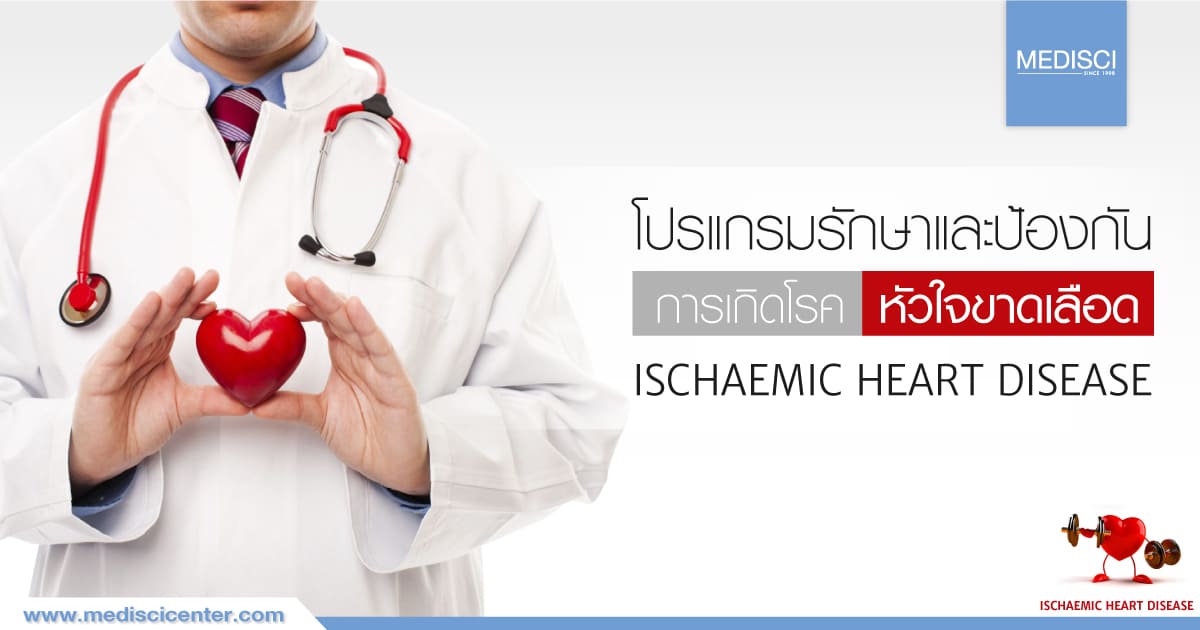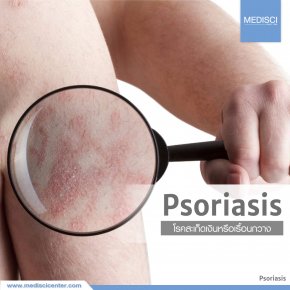Health Care Program: Ischaemic Heart Disease

Lifestyle changes by reducing risk factors are an important way to treat myocardial infarction from coronary artery disease. It also helps to prevent coronary occlusion and reduce mortality from heart disease.

The Main Factors For Risk Control
- Strictly refrain from smoking
- Reduce and control standard body weight
- Exercise regularly
- Get enough sleep
- Find ways to manage your stress such as hobbies, meditation, and breath control.
- Control blood sugar and lipids and maintain normal blood pressure to prevent diabetes, hyperlipidemia, and hypertension.
- Avoid exposure to heavy metals.
- Diet control by choosing balanced diets that provide energy and full nutrition.
- A blood test should be done to assess the risk of coronary artery disease, which causes heart disease, high blood pressure, and paresis and paralysis. The tests are as follows:
- Lipid blood test: Fatty blood vessels are the cause of atherosclerosis which leads to coronary artery disease. If the narrowed coronary arteries can no longer supply myocardium, it will later cause ischaemic heart disease.
- Total Cholesterol: If the level is high, it can cause arterial stiffness and stenosis.
- LDL – Cholesterol: If the level is high, it can cause arterial stiffness and stenosis.
- Triglyceride: If the level is high, it can cause arterial stiffness and stenosis.
- HDL – Cholesterol: It is responsible for transporting fat out of artery walls. If the level is high, it can prevent you from atherosclerosis.
- CRP (high sen.) and ESR tests: indicate inflammation in different body parts and vascular walls. Fatty depositing in the arterial walls also causes inflammation of the arterial walls. Therefore, high CRP and ESR levels can predict the risk of arterial inflammation.
- Homocysteine test: A high level of homocysteine in the blood will destroy the endothelium, resulting in fatty deposits in the blood vessels, increasing the risk of coronary artery disease.
- Ferritin test: A high level of Ferritin in the blood shows high iron levels in your body which will increase oxidation and the risk of coronary artery disease. On the contrary, a low level of Ferritin in the blood shows low iron levels in your body, so you may be at risk of anemia.
- Fibrinogen test: High Fibrinogen levels cause platelets coagulation and increase the risk of coronary artery disease
- Apolipoprotein A1 (Apo A1) test: Apo A1 helps transport fat out of artery walls. If the level is high, it can prevent you from atherosclerosis.

IV Chelation
Detoxification by chelation, EDTA mixed with antioxidant vitamins and minerals is injected intravenous to get rid of toxic heavy metals such as lead and mercury. It will reduce the amount of free radicals, treat inflammation of the arterial walls, and increase blood flow. It is also an additional treatment for various diseases such as toxic residues, vascular inflammation, coronary artery disease, allergies, joint pain, etc., Therefore, you will be healthy and strong after undergoing the treatment.
IV chelation is commonly used to treat atherosclerosis and degenerative diseases of the circulatory system, and it can dissolve fat in the arterial walls. Disodium EDTA will draw calcium from the fat in the artery walls resulting in increased blood vessel flexibility. According to the study, it is shown that an increase in intracellular calcium causes endothelial cell dysfunction. As a result, it will cause platelet aggregation, stimulate more cells to destroy foreign bodies (macrophages), and affect artery walls to lose elasticity, which are lead to Atherosclerotic Vascular Disease.
As Disodium EDTA has the ability to pull calcium from cells, resulting in the balance of intracellular calcium, it can prevent the occurrence of atherosclerosis. In addition, many researchers found that the use of EDTA in combination with vitamins and minerals can increase the level HDL-Cholesterol, which is good fat in the body. HDL will not bind to the artery wall, resulting in preventing heart disease. Toxins that remain in the body are the cause of free radicals. These free radicals contribute to the inflammation of the artery walls which is the cause of degenerative diseases such as diabetes, heart disease, premature aging, and cancer.
Therefore, CHELATION THERAPY is involved in the prevention of inflammation of the artery walls and various degenerative diseases because EDTA helps to eliminate toxins from the body itself.
The Benefits of Intravenous EDTA
Intravenous EDTA injections increase the excretion of heavy metals in the urine. EDTA is able to bind to heavy metals and urine quickly, therefore, it helps the liver and kidneys to eliminate toxins from the body, resulting in preventing liver and kidneys from overworking. EDTA is highly safe since the body can eliminate it in 48 hours; as a result, there are no serious side effects except for headache, skin irritation, diarrhea, fatigue, and joint pain.
Contact Us
- Call-center: 089-9006100
- North Park (Ngam Wong Wan): 02-954-9440
- Ratchapruek: 02-863-8765
- Sukhumvit 39: 02-259-6992
- Line OA: @MEDISCI





